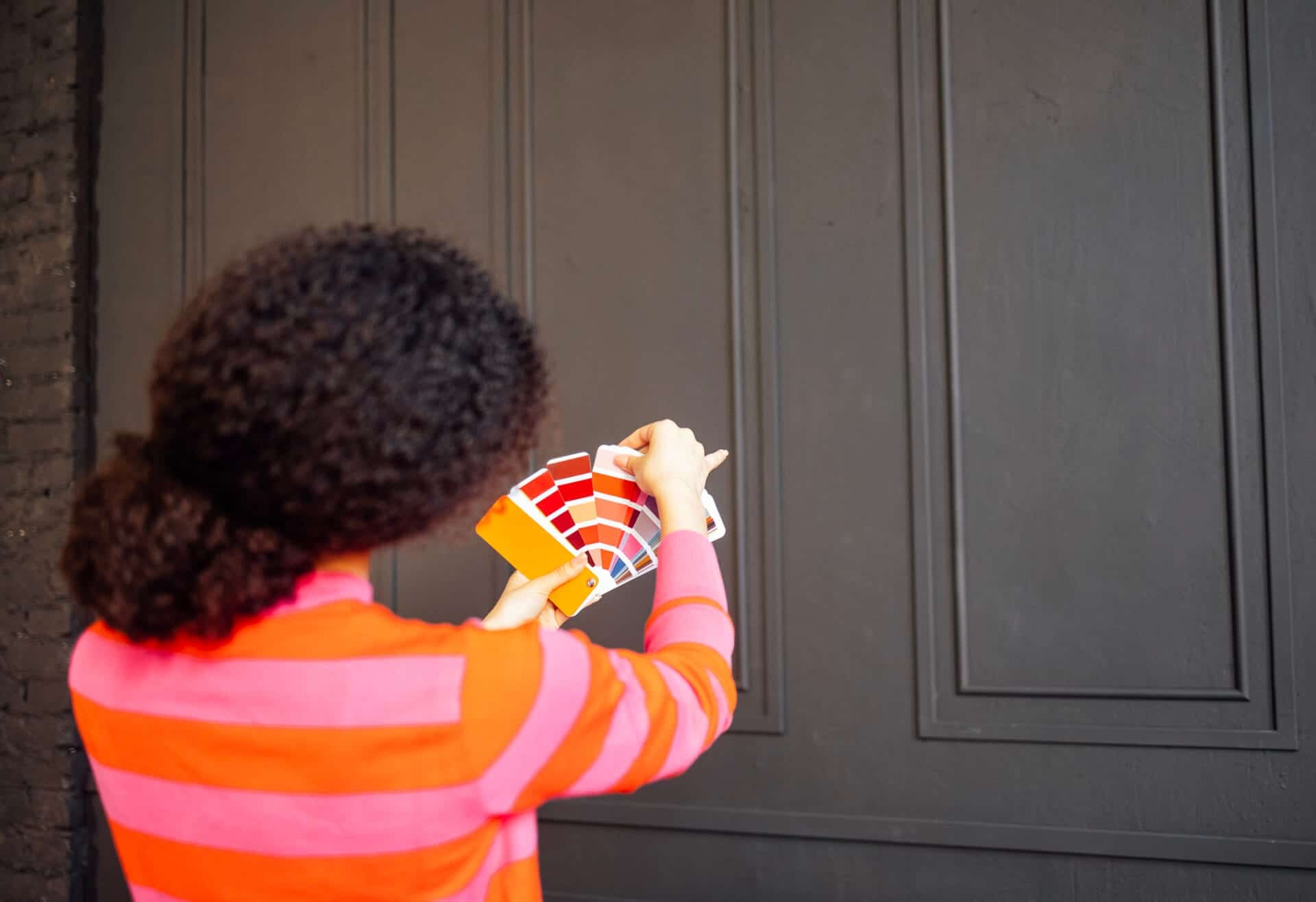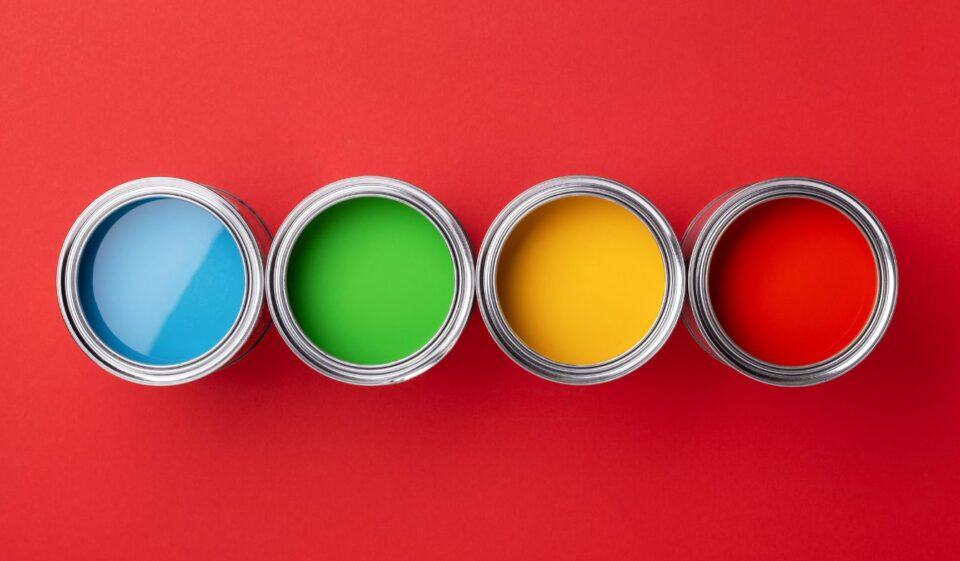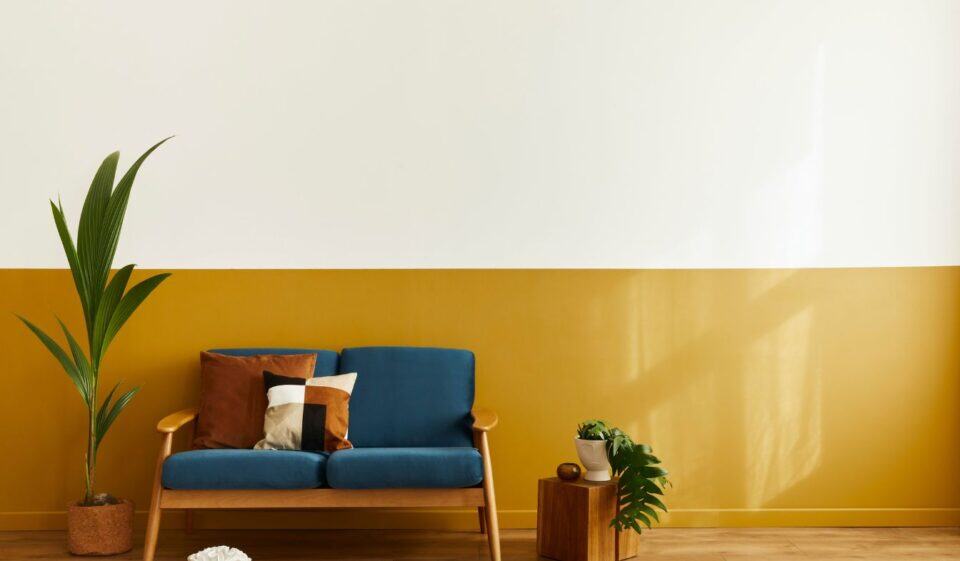When most homeowners think about updating their interior, they typically focus on walls, furniture, or flooring. But one often-overlooked design element that can dramatically enhance your home’s aesthetic is painting interior doors. These doors are not just functional barriers; they are powerful design statements that can tie rooms together or stand out as eye-catching features.
In this ultimate guide, we’ll explore how painting interior doors can elevate your home’s design, the top colors and finishes to consider, and why this simple change makes a big impact in modern home design. Whether you’re redesigning a single room or undergoing a whole home remodel, giving your doors a fresh look is a subtle yet sophisticated move.
Key Takeaways:
- Painting interior doors can boost your home’s style and value.
- The right interior door paint color can harmonize your entire design theme.
- This design choice is versatile, suiting minimal, traditional, or bold aesthetics.
- Painted interior doors can also hide wear and tear while adding character.
- No DIY or budget talk here—this is all about aesthetic strategy.
1. Why Interior Doors Deserve a Design Moment
Doors are everywhere in your home—bedrooms, bathrooms, closets, pantries. Yet they’re often painted white and forgotten. But painting interior doors shifts them from background elements to purposeful design assets. Think of each door as a blank canvas. A bold black, soft sage, or smoky gray can add instant sophistication and cohesion across spaces.
In the context of a whole home remodel, refreshing your interior doors aligns with the broader aesthetic updates being made, whether you’re modernizing a mid-century home or breathing new life into a traditional space.
2. The Emotional and Visual Impact of Color
Color psychology plays a big role in interior design. Choosing the right interior door paint color can affect how a space feels and functions.
Examples:
- Navy or charcoal doors: Add gravitas and professionalism—perfect for home offices.
- Warm neutrals like beige or taupe: Provide calming continuity in bedrooms and hallways.
- Sage or muted green: Bring natural, organic tones into your design.
- Glossy black: Offers modern elegance and works beautifully with gold or brass hardware.
By painting interior doors in a thoughtful color, you’re making a purposeful design choice that amplifies the tone of your home.
3. Design Cohesion During a Whole Home Remodel
A whole home remodel is the ideal time to rethink your interior doors. Many homeowners focus heavily on cabinetry, lighting, or open floor plans, but consistency is key in good design. Matching your door colors to your trim, molding, or flooring creates a cohesive look that ties your home together.
Whether you’re hiring a whole home remodeler or working with an interior designer, don’t overlook your doors. When done strategically, painted interior doors can:
- Transition smoothly between design zones
- Define styles across floors or levels
- Unify eclectic design choices with a singular color anchor
4. Painted Interior Doors: Matte, Satin, or Gloss?
Choosing the right finish for your interior door paint is just as important as the color itself. Here’s how to choose:
| Finish Type | Best For | Design Benefit |
|---|---|---|
| Matte | Low-traffic areas | Velvety, understated look |
| Satin | Most interiors | Durable and stylish with slight sheen |
| Gloss | High-traffic or bold statements | Reflective and dramatic |
For a whole home remodel, consider using satin for its versatility and durability. It’s especially beneficial in high-touch zones like kitchens, laundry rooms, or main hallways.
5. Should All Interior Doors Match?
One common question during whole home remodels is whether all interior doors should match. The answer: not necessarily.
Matching is great when:
- You want a unified, sleek look.
- Your walls, flooring, and trim are cohesive.
Mixing works well when:
- You want to define different spaces (e.g., an office or playroom).
- You use accent colors or thematic decor by room.
By painting interior doors in a mix of tones while sticking to a coordinated palette, you can give each space a sense of identity without sacrificing cohesion.
6. The Unexpected Benefits of Painted Interior Doors
Aside from aesthetics, painted interior doors offer some practical perks:
- Conceals Wear and Tear: Scratches, dents, and smudges are far less noticeable with darker or semi-gloss finishes.
- Easier Maintenance: Satin or gloss finishes are easy to clean—just wipe them down with a cloth.
- Increases Perceived Value: Subtle design upgrades like custom-colored doors suggest a curated, high-end feel, especially during a whole home remodel.
7. Coordinating With Hardware and Trim
Your choice of interior door paint can either highlight or hide your door’s hardware and trim. Consider the full composition:
- Gold hardware + deep navy door = Bold, contemporary luxury
- Matte black hardware + neutral taupe door = Modern farmhouse charm
- White trim + contrasting door color = Visual depth and architectural interest
In the world of whole home remodeling, these minor design decisions add up to a major transformation.
8. Style Inspiration by Home Design Type
Let’s explore how painting interior doors can suit different design styles:
Modern:
- Black or dark gray doors with minimalist handles
- High-gloss finish for sleek appeal
Traditional:
- Cream or warm white with brushed nickel hardware
- Satin finish for classic elegance
Boho/Artistic:
- Terracotta or sage green doors
- Matte finish and eclectic knobs or handles
Coastal:
- Soft blue or seafoam
- Coordinating with white trim and driftwood decor
No matter your aesthetic, painted interior doors can help express it.
9. Don’t Skip Doors in a Whole Home Remodel
While walls, floors, and layouts often get all the attention in whole home remodels, the finer design details matter just as much. When planning your remodel:
- Include door updates in the design discussion.
- Use mood boards to test color choices.
- Align door updates with lighting and flooring styles.
If you’re working with a whole home remodeler, ask how they can incorporate painting interior doors into the overall project timeline and color scheme.
10. Interior Doors as Architectural Highlights
Beyond color, interior doors themselves can be architectural features. Consider painting interior doors with paneling, molding, or barn-style sliding designs in a stand-out color.
These painted doors can:
- Draw the eye in a long hallway
- Anchor a large wall
- Serve as a statement piece in minimalist spaces
This is especially powerful during a whole home remodel, when walls and floors are likely getting a refresh anyway.
Small Change, Big Impact—Elevate Your Space with Painted Doors
Painting your interior doors is one of the simplest yet most powerful ways to refresh your home’s design. It adds personality, contrast, and cohesion—turning overlooked surfaces into statement pieces that tie your space together.
At Armored Painting, our interior painting services are designed to transform your home with precision, style, and lasting quality. Whether you’re going bold or staying classic, we’ll help you choose the perfect color and finish to match your vision.
Let your doors do more than open rooms—let them elevate your entire home. Choose Armored Painting for flawless, professional results. Contact us today to know more.
Frequently Asked Questions
What’s the best paint for interior doors?
Use high-quality latex or enamel-based paint in satin or semi-gloss finish. These resist wear and are easy to clean.
Should doors be painted the same color on both sides?
Not necessarily. It depends on the adjoining rooms’ color schemes. Many designers match the door color to the room it opens into.
Do painted interior doors work in every home style?
Yes! Whether your home is modern, traditional, eclectic, or coastal, there’s a color and finish that will enhance your space.
Can I keep white trim with colored doors?
Absolutely. White trim paired with colored doors creates contrast and emphasizes your architectural lines.




